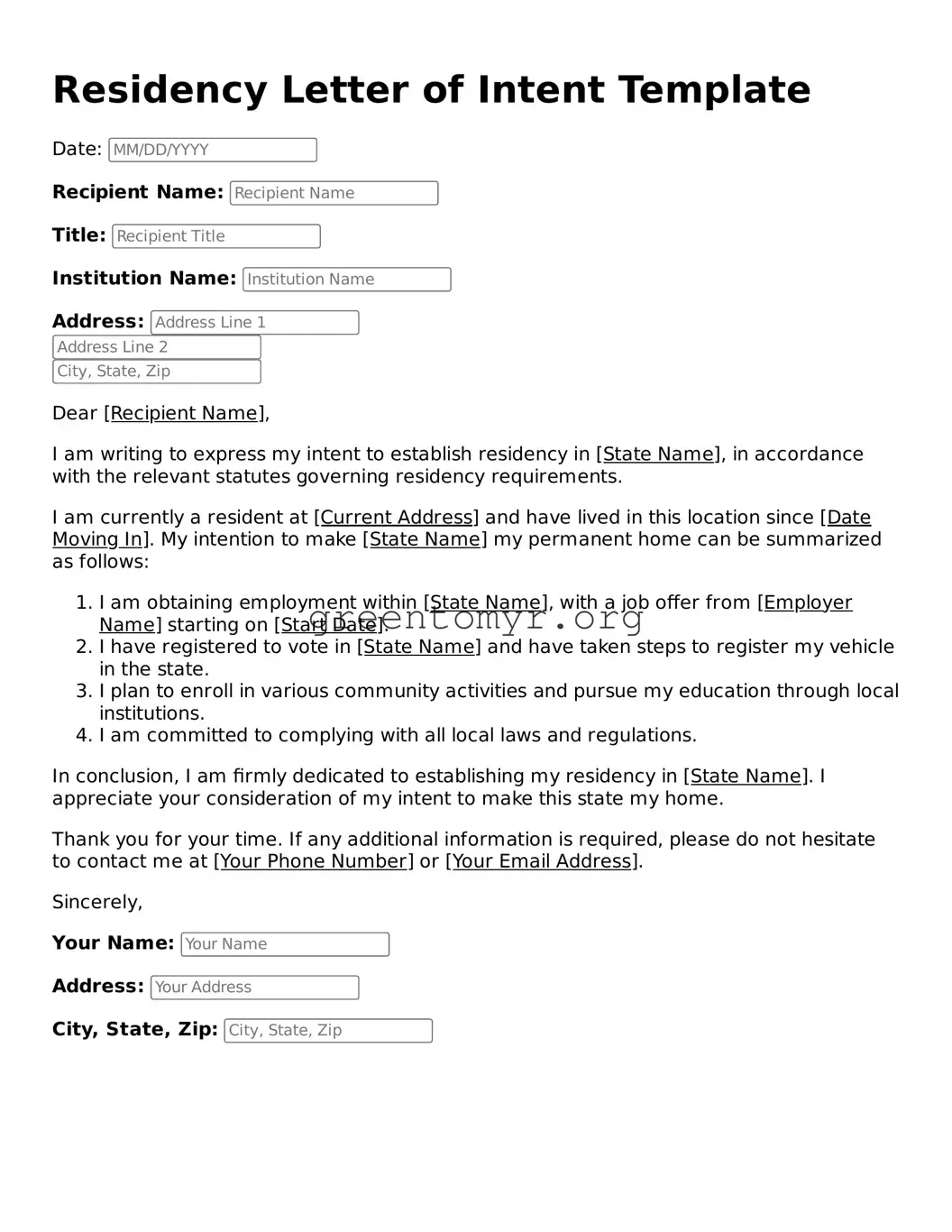Completing the Residency Letter of Intent form is a crucial step for applicants seeking to secure a position in a residency program. However, many individuals make mistakes that can impact their application negatively. Awareness of common errors can enhance clarity and effectiveness.
One frequent mistake is failing to follow the specified instructions. Every residency program has its own requirements regarding the format, length, and content of the letter. Applicants should carefully read and adhere to these guidelines to avoid immediate disqualification.
Another common error involves excessive length. A concise letter is often more impactful than a lengthy one. Applicants should aim to clearly express their intentions and qualifications without unnecessary elaboration. Sticking to the recommended word count is advisable.
Moreover, including irrelevant information can detract from the main message. Focusing on pertinent experiences, skills, and aspirations is crucial. Admissions committees are typically looking for specific attributes and experiences that align with the program’s goals.
Many applicants also overlook the importance of proofreading. Spelling and grammatical errors can create an unprofessional impression. A polished letter reflects a candidate's attention to detail and commitment to excellence.
Additionally, another mistake is using a generic template or letter. Each residency program operates differently, and applicants should personalize their letters for each program. Tailoring the content shows genuine interest and allows applicants to highlight why they are a good fit.
Failure to articulate career goals is another mistake made by applicants. The letter should effectively convey an applicant's future aspirations within the medical field. Clearly defined goals make a stronger case for the applicant's commitment to the residency.
Inadequate expression of enthusiasm for the specific program can lead to missed opportunities. Candidates should demonstrate a genuine interest in what the program offers and how it aligns with their personal and professional values.
Some also neglect to ask for feedback from mentors or peers. Input from experienced individuals can provide valuable insights that enhance the letter’s quality. An external perspective often uncovers areas for improvement that may go unnoticed.
Finally, failing to submit all required documents can result in incomplete applications. Applicants should double-check the submission checklist to ensure that the letter, along with any other necessary materials, is included and submitted on time.
By avoiding these common pitfalls, applicants can create a compelling Residency Letter of Intent that effectively communicates their readiness and enthusiasm for the program.
